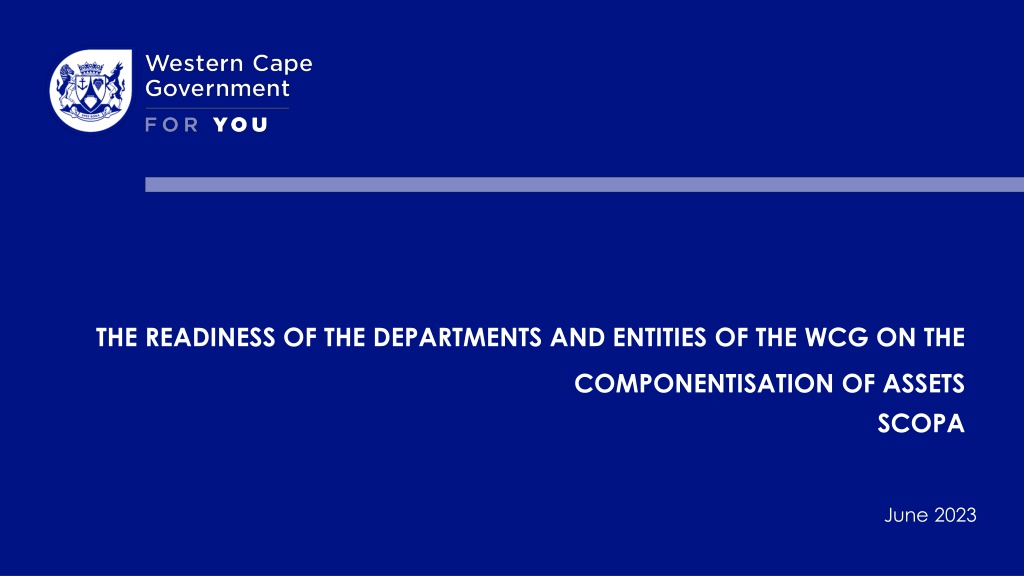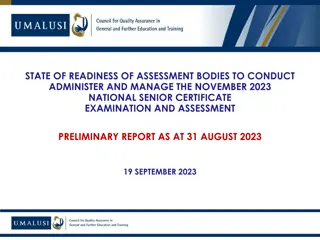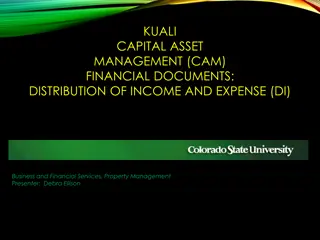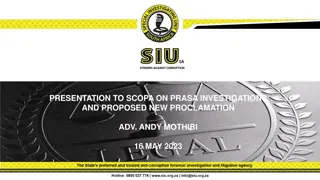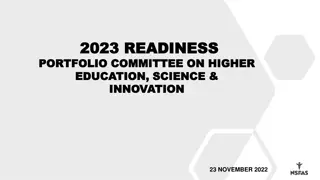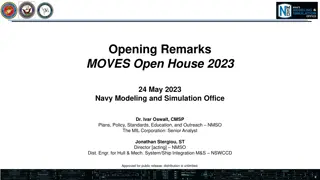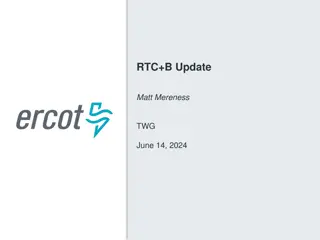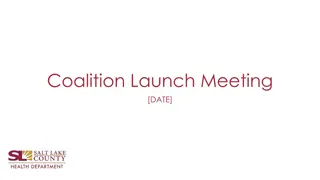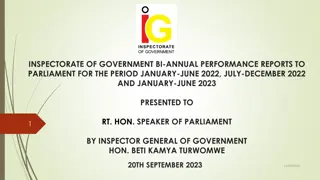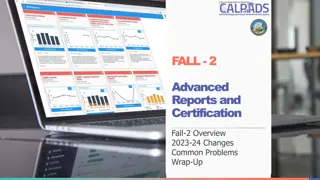Componentisation of Assets: Readiness and Overview for SCOPA June 2023
The readiness of departments and entities within the WCG on the componentisation of assets is discussed along with an overview. Componentisation involves breaking down significant parts of assets into individually identifiable parts with different useful lives. Advantages include accurate tracking of costs and depreciation, while disadvantages include increased complexity and resource requirements. Concluding remarks highlight that componentisation is not yet a requirement due to system maturity and infrastructure limitations.
Download Presentation
Please find below an Image/Link to download the presentation.
The content on the website is provided AS IS for your information and personal use only. It may not be sold, licensed, or shared on other websites without obtaining consent from the author. Download presentation by click this link. If you encounter any issues during the download, it is possible that the publisher has removed the file from their server.
Presentation Transcript
THE READINESS OF THE DEPARTMENTS AND ENTITIES OF THE WCG ON THE COMPONENTISATION OF ASSETS SCOPA June 2023
OVERVIEW COMPONENTISATION OF ASSETS Define is componentization with an example Advantages of componentization Disadvantages of componentization Concluding remarks Briefing to SCOPA on componentisation 2
DEFINE COMPONENTIZATION In essence, it is breaking down significant parts of an assets into individual, separately identifiable parts that have a different useful life from the main asset. This is a requirement in terms of the existing accounting standard GRAP 17 and mentioned in the Accounting manual for departments. E.g. A motor vehicle is made up of different parts, such as the engine, transmission, wheels, and body. Each of these parts has a different useful life and will need to be maintained or replaced at different times. 3
ADVANTAGES OF COMPONENTISATION It allows for more accurate tracking of the cost and useful life of each significant part of an asset. This can help entities better manage their assets by identifying which parts require more frequent maintenance or replacement and planning for those costs. Second, it can help entities more accurately determine the depreciation expense for each component, which can improve the accuracy of their financial statements. 4
DISADVANTAGES OF COMPONENTISATION One disadvantage is that it can be time-consuming and costly to identify and track each significant part of an asset. This may require additional resources and expertise. Additionally, componentization may increase the complexity of financial statements, which could make them more difficult to understand for users who are not familiar with the concept. 5
CONCLUDING REMARKS Componentisation is not yet a requirement. It is only for significant assets or significant individual parts that make up a significant asset. NT is revisiting the accounting framework as the systems are not matured enough to give effect to componentization. Departments do not have the necessary tools / infrastructure to deal with componentization. 6
